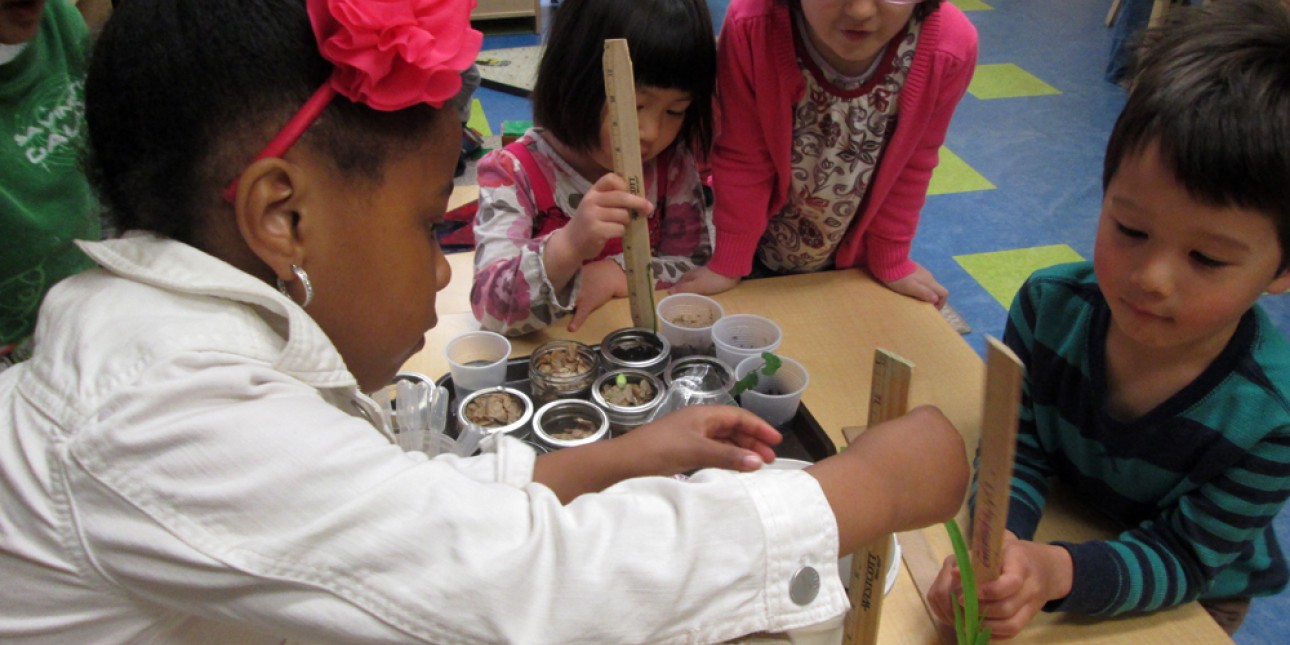Message from Tamara: Growing a Curriculum

At PIC, we pride ourselves on our child-lead emergent curriculum. Teachers are careful observers of young children, watching their discoveries and tracking their wonderings. In the beginning of April, spring begins to unfold in Philadelphia, and even we adults who are well used to the season’s cycles can become captivated by the emerging buds and blooms. This is all the more wondrous for 3, 4 and 5 year olds who have only witnessed it a few times and who are very busy forming theories about the how’s and why’s of their world. Thus, it is no surprise that each of the preschool classrooms is buzzing with talk of seeds and plants, insects and mud.
Each class has its own path through these topics, and the teachers are busy crafting opportunities for exploring and developing their learning. In the Roadrunners, a hot topic after the recent rains was the profusion of worms that were washed from their homes. As we worked to add mulch to the garden paths, one child commented, “This will help the worms stay in the dirt, and help the vegetables grow.”
The Fireflies recently came to my office, bringing with them a letter I had written them. I had offered that my office plant had had babies, and I wanted to share them with the classrooms. The Fireflies were full of ideas about how to support the plant with, “sun and air and dirt and water!”
In the Grasshopper room, the children became fascinated by the idea of the inchworm after reading, Inch by Inch by Leo Leoni, and have undertaken a deep study of non-standard measurement using the inchworm as the unit of measure (if you are curious how tall you are in inchworms, just visit their room!)
We have a few structures in place that support curriculum development. Our official curriculum at PIC is the Creative Curriculum by the company Teaching Strategies, which guides many aspects of the classroom from arranging the rooms into learning centers to structuring our days with large blocks of time for play and exploration.
We choose the topic of study in the preschool classrooms based on the ideas of emergent curriculum, of watching and reflecting upon the children’s interests. Once the teachers have identified a curricular topic for study, they create a monthly Project Map and weekly Planned Possibilities, based on the framework of the Project Approach. These studies have a beginning (with focusing questions and explorations), middle (with investigations and field work) and end (with a culminating project celebrating what they’ve learned). These different structures give the framework to the wonderfully rich curriculum that the teachers and students craft together, and so as each child engages in the wonder of spring, of mud, of bugs, know that they are being guided by teachers skilled in supporting all aspects of this learning!
Classrooms